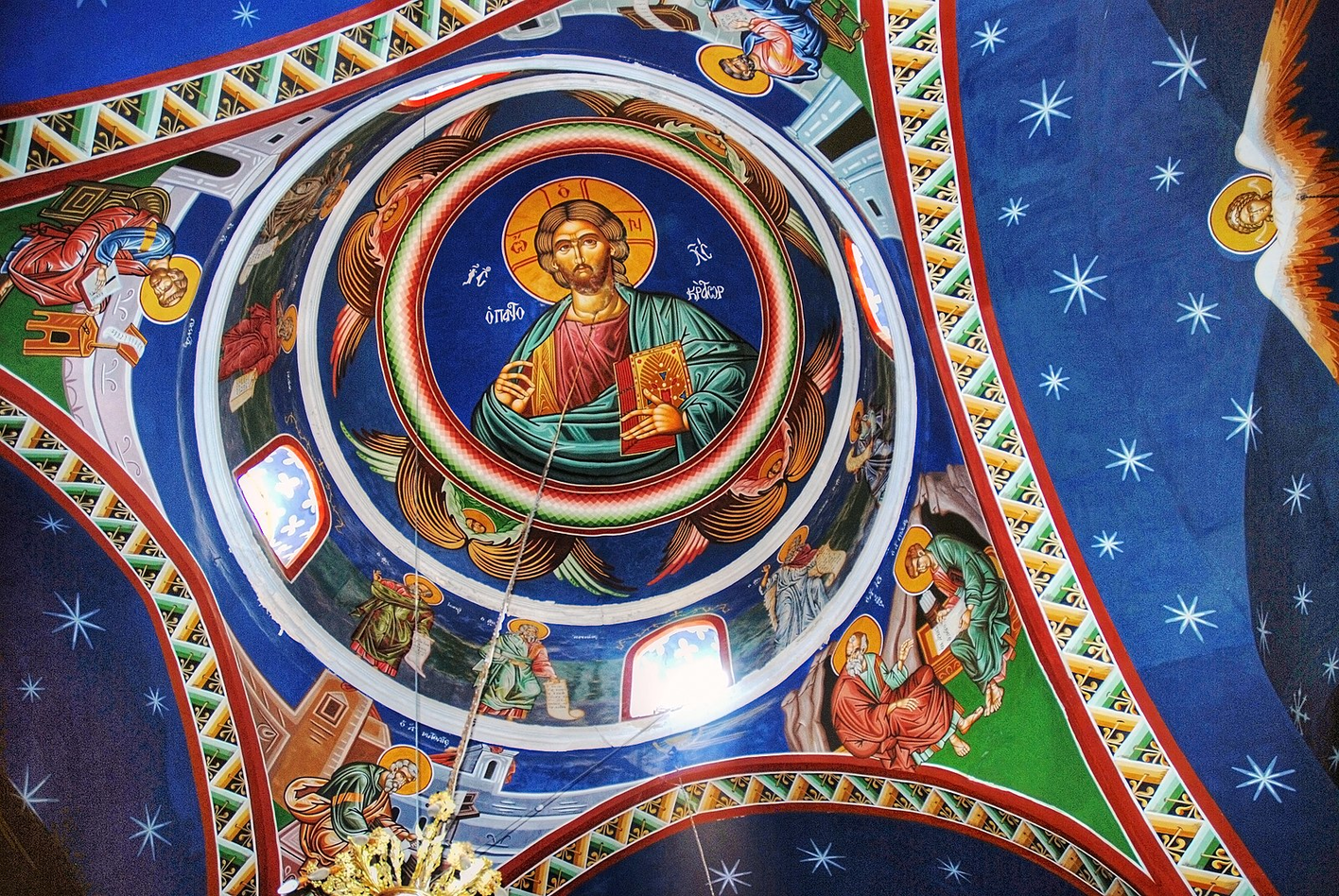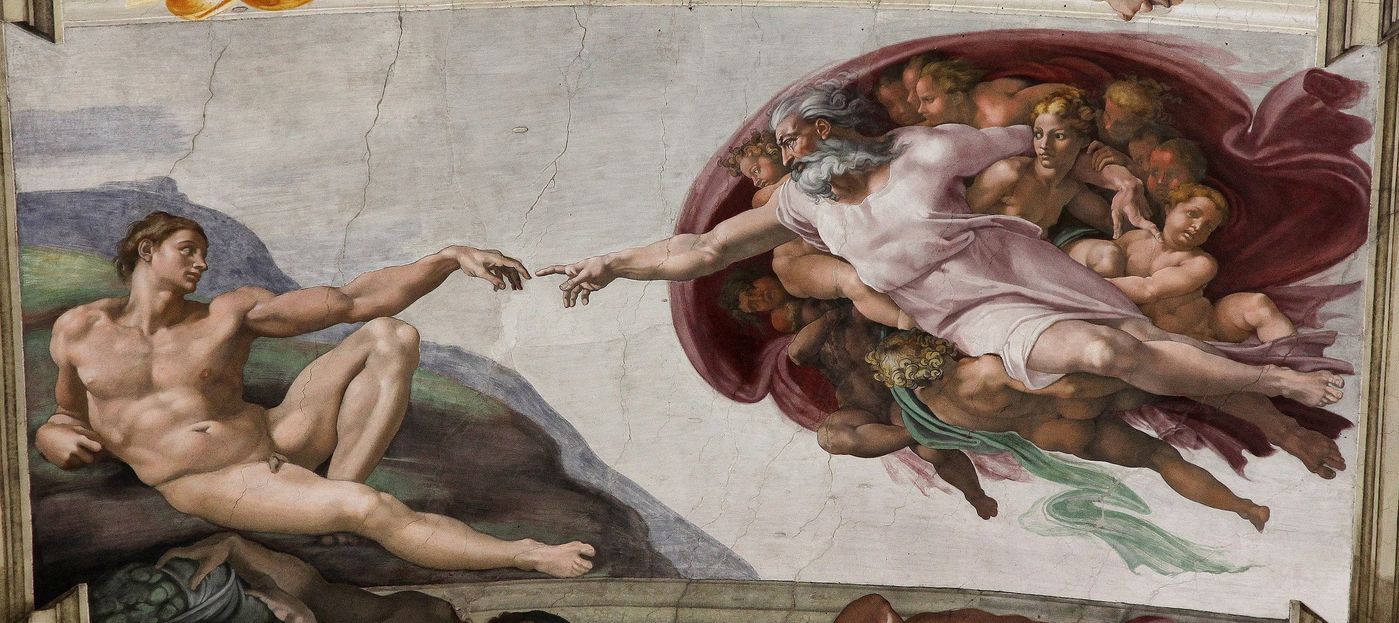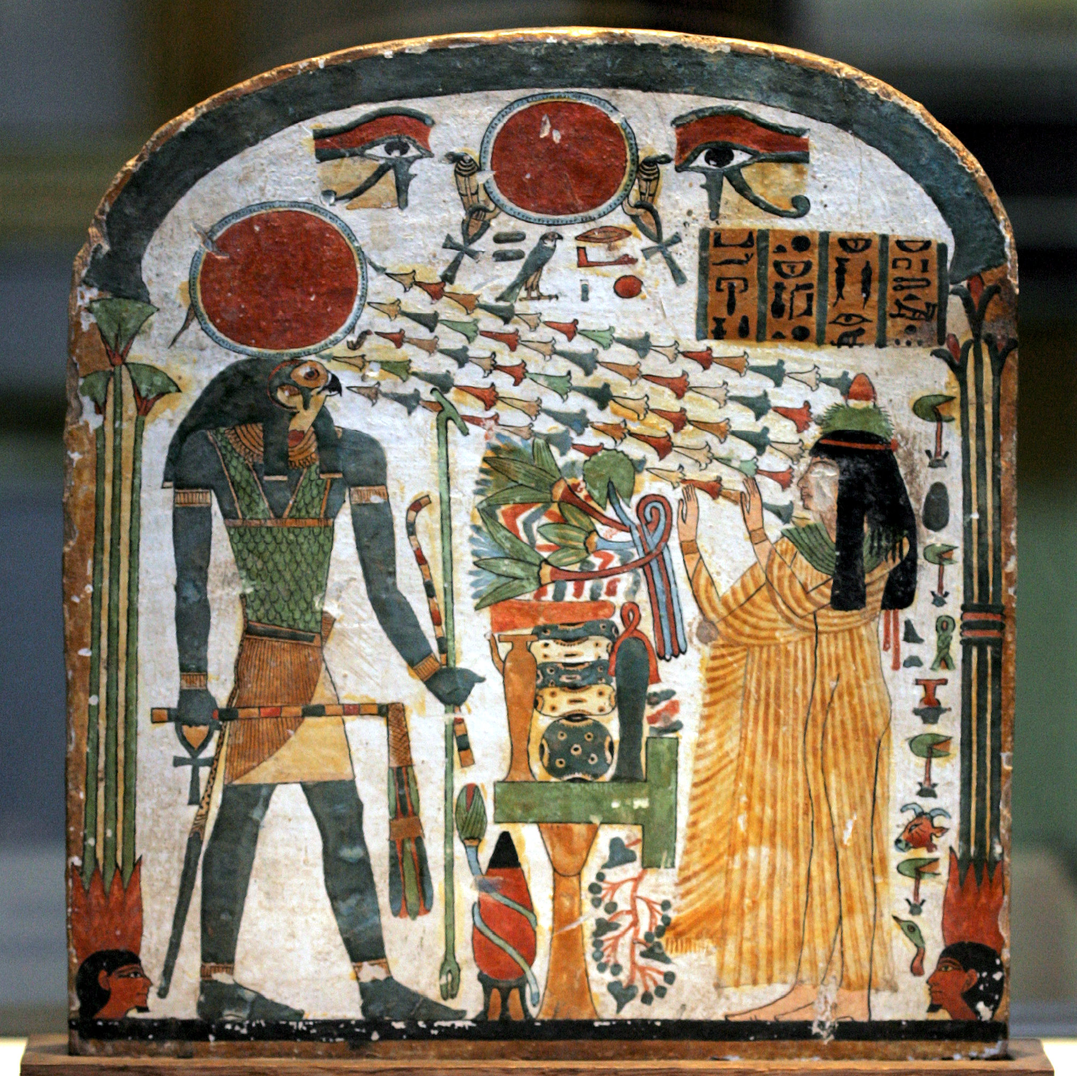Here, we see an ancient Egiptian work, where a woman is worshiping Ra-Horakhty, who blesses her with rays of light.
Ra-Horakhty was a combination of the gods Horus (a god of the sky) and Ra (the god of the sun).
So, Ra-Horakhty was thought of as the god of the rising sun. He was worshiped at the end fo the New Kingdom, so the object on the photo can be traced to 1150 BC.
In cultures, humans start to do acts that reflect a close relationship between an individual and a god, marking a close relationship to the devine, but demarking the devine as an outer prescence - even though the woman and the deity are in this image in the same space.
The power of the spiritual seems to be taken from ''all'' , from a group functioning in unity, and assigned to a placeholder. Still, this individual, such as the rulers here in these hieroglyphes,
are on a realm with personified gods, and with humans as well.
There is a dialogue still, but a guided and sanctioned one. The sense of non-dual unity is more an illusory one, rather than a factual state.
As organised religion took rise, we se more and more images of human and deities represented as apart. Humans are often in christianity represented as lower then the devine, never able to reach the summits of the ''devine heaven''. This is quite finely represented in the order in which images are painted in insides of the Ortodox Cristian churches - humans figures always lower then the celestial images form the Bible, and Christ in the midle, in the highest point, looking down.
This is further emphasize by this famous detail of the ceiling fresco.
We see Adam aiming to touch the Lord, but the Lord is unattainable. So close yet far away. The true nature of the Universe, represented by God, is out of reach.
A portrait of striving to no avail. A beautiful failure. A loss to both ends.
Yet, going back to the need to give alternative meaning to this piece - no wonder that we feel the narrative unjust to the essence . Thus we here the theories that, while portraying a religious topic, what in this image Michelangelo was actually presenting in this detail is the Heart and the Brain, rather than the Devine and the human.
Still - an image of opposite, of a dual presence.
In the usage of human form, as masterful as it may be, the displacement of religious matter seems to objectify and externalize the human sacred experience, giving its form to humans passed, a lookalike that is an object of observance, rather then the essence of the presence.
But as society changed, so did the relationship to both religion and to spirituality as well. in the late 19th and 20th century, a new approach gave rise to those who reinterpret the spiritual realm.
In these religious works, the human form is used to represent the divine, but in such a way that it alienates the spiritual from the direct human experience, placing it in a certain context.
The placement of work has moved from the walls where the whole community can reach it and engage in it in a sacred place, to an unattainable highpoint we can but revere.
To further illustrate what I mean by this, let us look at the Sistine Chapelle.
The placement of this beautiful work goes to enforce the idea of the devine realm as unreachable to us. It is a realm rich in texture, color, force. However, again, it is above, away, and in representation of a religious narrative.
One can almost say that the religious narrative serves as an excise to give more meaning, more color; to serve as a starting point to reach another quality.



